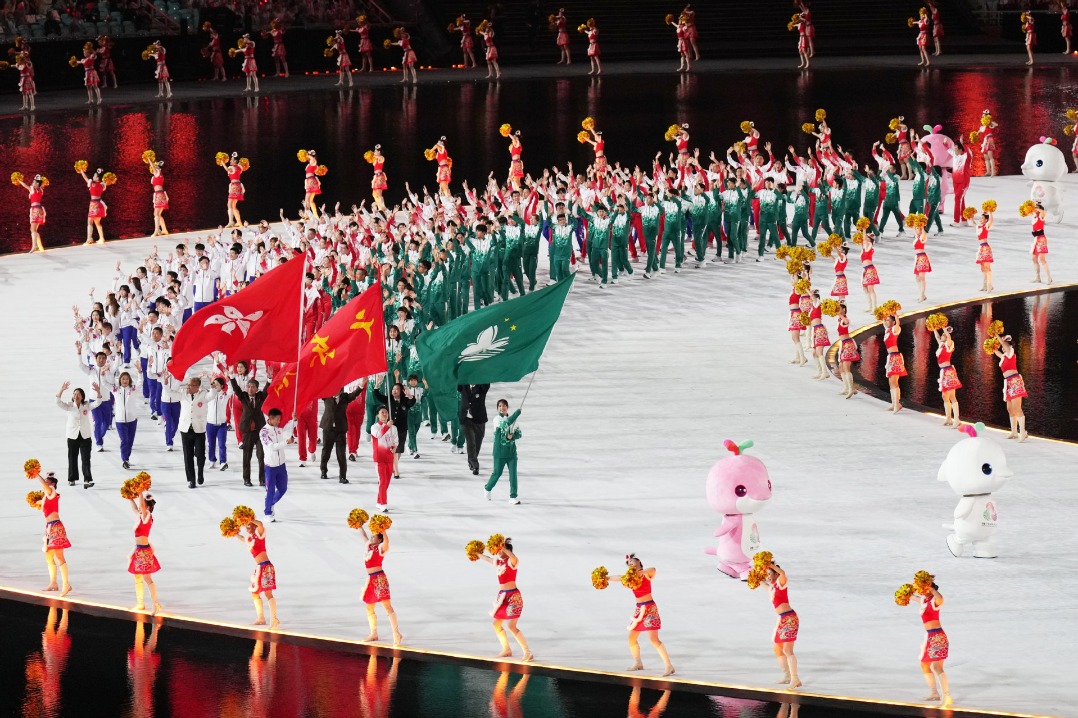Beijing fostering peace in Middle East
By Arhama Siddiqa | China Daily Global | Updated: 2023-06-08 09:00
The Middle East keeps warming up relations and exchanges amid waves of rapprochement between countries. High-echelon visits have been made by Syrian President Bashar al-Assad, Iranian President Ebrahim Raisi, Saudi Arabian Foreign Minister Prince Faisal bin Farhan Al Saud and Egyptian Foreign Minister Sameh Shoukry, among others.
The thread that ties these countries together is China, the bedrock being the billion-dollar Belt and Road Initiative, which was proposed by China 10 years ago. The BRI is predicated on enhancing connectivity and promoting economic cooperation among participating countries. The initiative consists of two main components: the land-based Silk Road Economic Belt and the Maritime Silk Road.
To date, the BRI is the most concrete example of Chinese implementation of South-South cooperation, which is based on the principle of solidarity, mutual benefit and shared development objectives between partner countries. The central tenets of South-South cooperation are economic interdependence, self-reliance and mutual benefit, all postulated on equality and mutual respect for territorial integrity and national sovereignty.
Chinese investment, infrastructure and technology, as well as the multilateral organizations initiated by Beijing, have become an increasingly vital component of the economic and political diversification strategies of numerous Arab states.
Examples include the United Arab Emirates' Khalifa Port, Qatar's Lusail Stadium and the Haramain High-Speed Railway in Saudi Arabia. This also helps explain why the UAE, Bahrain and Kuwait have applied to join the Shanghai Cooperation Organization as dialogue partners, after Saudi Arabia became a dialogue partner earlier.
Similarly, the Middle East is of crucial importance due to its location at the crossroads of three continents — Europe, Africa and Asia — and the convergence of the Mediterranean, Red, Arabian, Caspian and Black seas. China and the Middle East states have mutual interests in integrating the BRI into national regeneration programs, which have included Saudi Vision 2030, UAE Vision 2021, Jordan 2025, Turkiye's Middle Corridor and Kuwait's Vision 2035.
In recent years, there has been a sharp increase in trade between China and the Middle East, especially in the energy sector, which remains the substratum of China's associations with the region. China has also signed comprehensive strategic partnership agreements with a number of countries, such as Egypt, Saudi Arabia and Iran. In 2022, Syria also came into the BRI fold.
Arab countries have expressed their support for Chinese initiatives on numerous occasions, the most recent being joint statements signed at the China-Arab States Summit and the China-Gulf Cooperation Council Summit in December.
It is important to note that, even though Syria became a BRI partner in 2022, the prevailing unrest in the country threatened to upend any chances of progress. In this context, China sought to mediate and promote peaceful resolutions, ensuring the advancement of its projects while fostering stability and prosperity in the region. Through active engagement in diplomatic efforts, China is managing to successfully navigate the complexities of the region, paving the way for successful BRI implementation and contributing to the overall development and well-being of the Middle East.
China's global strides have not gone unnoticed by the United States. In 2020, the US' Caesar Act took effect, establishing in part that sanctions would be imposed on those who provide support to the Syrian government or knowingly provide certain goods or services to Syria. The following year, US President Joe Biden unveiled the Build Back Better World initiative, which more or less competes with the BRI, and the G7 introduced the Partnership for Global Infrastructure and Investment, though pledges to developing nations are yet to be met.
What has further prompted Middle Eastern states' inclination toward China is a growing frustration with the US' fluctuating priorities, conflict-prone approaches and inconsistent engagement with the region as a whole. Other precursors for the need to enter into more pragmatic agreements have been the global financial crunch brought on by the COVID-19 pandemic and the fuel crisis exacerbated by the Russia-Ukraine conflict.
Nonetheless, Middle Eastern nations are not perceiving regional developments in a binary fashion. Numerous Arab states are adopting a more pragmatic approach based on national interests. Instead of pursuing alignment with a single great power, they want to participate in the multilateral arrangements directed by Washington and Beijing. All these countries list China as their largest trading partner and the US as their strategic partner.
Hence, while Washington still maintains a significant military presence in almost every Middle Eastern country, Gulf states have responded to the changing geopolitical landscape by engaging in long-standing strategic relationships with Western countries while increasing their economic and energy ties with Beijing.
The author, a Middle East analyst, is a research fellow at the Institute of Strategic Studies Islamabad in Pakistan.
























